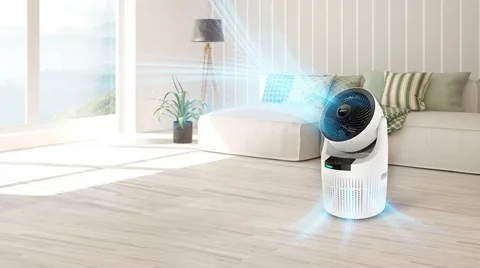The issue of air pollution has been a growing concern for an extended period. However, with the pandemic situation and the increased amount of time people spend indoors, the quality of indoor air has become a more pressing issue.
Discover how PCO technology can transform your indoor air quality and create a cleaner, healthier environment. In this blog, we’ll delve into the workings of this innovative solution, its effectiveness, and compare it to the benefits of radiant Catalytic Ionization Technology. Take control of your air quality today with PCO technology. Many companies like triad air offer PCO Cell that can be used on various air purifiers.
Table of Contents
What is PCO Technology?
PCO, short for Photocatalytic Oxidation, is a state-of-the-art air purification technology that harnesses the power of light energy to eradicate harmful pollutants and bacteria from the air we breathe. This efficient and reliable system is widely used in commercial settings to enhance indoor air quality and create a healthier environment.
Discover PCO, the innovative air purification technology that harnesses the power of light to eliminate pollutants and bacteria from indoor environments. This revolutionary solution is highly effective and has become a staple for commercial facilities looking to improve their air quality.
How PCO Technology Operates?
Air purifiers based on PCO technology utilize light energy to activate a catalytic reaction that decomposes pollutants and bacteria present in the air. The UV light energy is released and absorbed by the photocatalyst to initiate a chemical reaction that eradicates pollutants and bacteria effectively, within the catalytic chamber.
Passive air purification systems, like PCO, can decrease the number of airborne pathogens that come into contact with the equipment. These systems create byproducts consisting mainly of carbon dioxide and water. Nevertheless, unlike other active air purification techniques, passive systems cannot prevent the spread of pathogens.
PCO technology requires a UV light source to activate the photocatalyst. This light source, typically composed of high-intensity incandescent lamps or LEDs, supplies the necessary energy for the photocatalyst. As the UV light is absorbed by the photocatalyst, it becomes activated and ready to purify the air.
Benefit From Using PCO Technology Air Purifiers.
Air purifiers utilizing PCO technology offer distinct advantages over standard mechanical filtration-based air purification techniques. These benefits include:
Effective In Reducing Air Borne Contaminants
The efficacy of PCO technology has been demonstrated in eliminating a broad spectrum of impurities and microorganisms, such as volatile organic compounds (VOCs), mold, and allergens.
System Requires Little Maintenance
Experience cleaner indoor air without the hassle of frequent filter changes. PCO technology revolutionizes air purification by providing a low-maintenance solution to improve air quality, unlike traditional air purifiers.
This benefit proves to be a hassle-free solution for establishments seeking to enhance their air quality without the burden of continuous upkeep and costly resources.
Quiet System Operation
PCO air purifiers provide a noise-free environment suitable for offices and learning settings due to their quiet operation at reduced decibel levels. Experience a peaceful, clean atmosphere with PCO air purifiers.
For businesses seeking an air quality solution that won’t interfere with their indoor environment, our advantage is clear. With minimal noise pollution, our system ensures clean air without disrupting daily operations.
Increasing The Lifespan Of Technology Products
Revolutionize your air purification experience with PCO technology. Say goodbye to the frequent replacement of traditional filtration media and say hello to a photo catalyst that lasts a remarkable 12 to 24 months. Opt for a more efficient and cost-effective solution to clean indoor air effortlessly. Choose PCO technology.
Ways to Use PCO Technology
PCO technology proves to be versatile as it can significantly enhance indoor air quality across various settings. Its range of applications is expansive and is an efficient solution for creating a cleaner and safer environment. Notable instances that utilize PCO technology include:
Commercial Buildings And Offices
PCO technology is an excellent remedy for office air quality issues. Its implementation can enhance the overall atmosphere of a spacious workspace, resulting in a healthier environment beneficial for the workers.
K-12 Schools And Higher Education
PCO technology offers an ideal solution for schools seeking to enhance air quality while mitigating common airborne pathogens in learning environments. This technology is also ideal for use in classrooms where noise level is crucial to facilitating successful instruction and student engagement, making PCO air purifiers a prime choice.
Hospitals And Healthcare Facilities
In healthcare facilities, air quality is paramount for the health and safety of patients and staff. That’s where PCO technology comes in, playing a crucial role in reducing the spread of harmful bacteria and other pathogens. Whether it’s hospitals or medical centers, PCO technology is an invaluable tool for maintaining a clean and healthy environment.
How Do The Technologies Of PCO And RCI Compare?
RCI technology harnesses the power of UV-C energy to generate air-scrubbing molecules by activating a special photo catalyst made of titanium dioxide. These molecules, which include powerful oxidizers such as hydroxyl radicals, superoxide, hydroxide, and hydrogen peroxide, work tirelessly to break down viruses and bacteria through constant oxidation.
The end result is a clean, fresh smelling environment with nothing but CO2 and water in the air.
Citing several key advantages over PCO technology, RCI technology not only carries the same benefits but also boasts of superior offerings. One prime example is its active air purification capability which, unlike PCO technology, does not remain confined within the system. By introducing “air-scrubbing molecules” throughout the space, RCI technology can combat a wider range of airborne pathogens.





